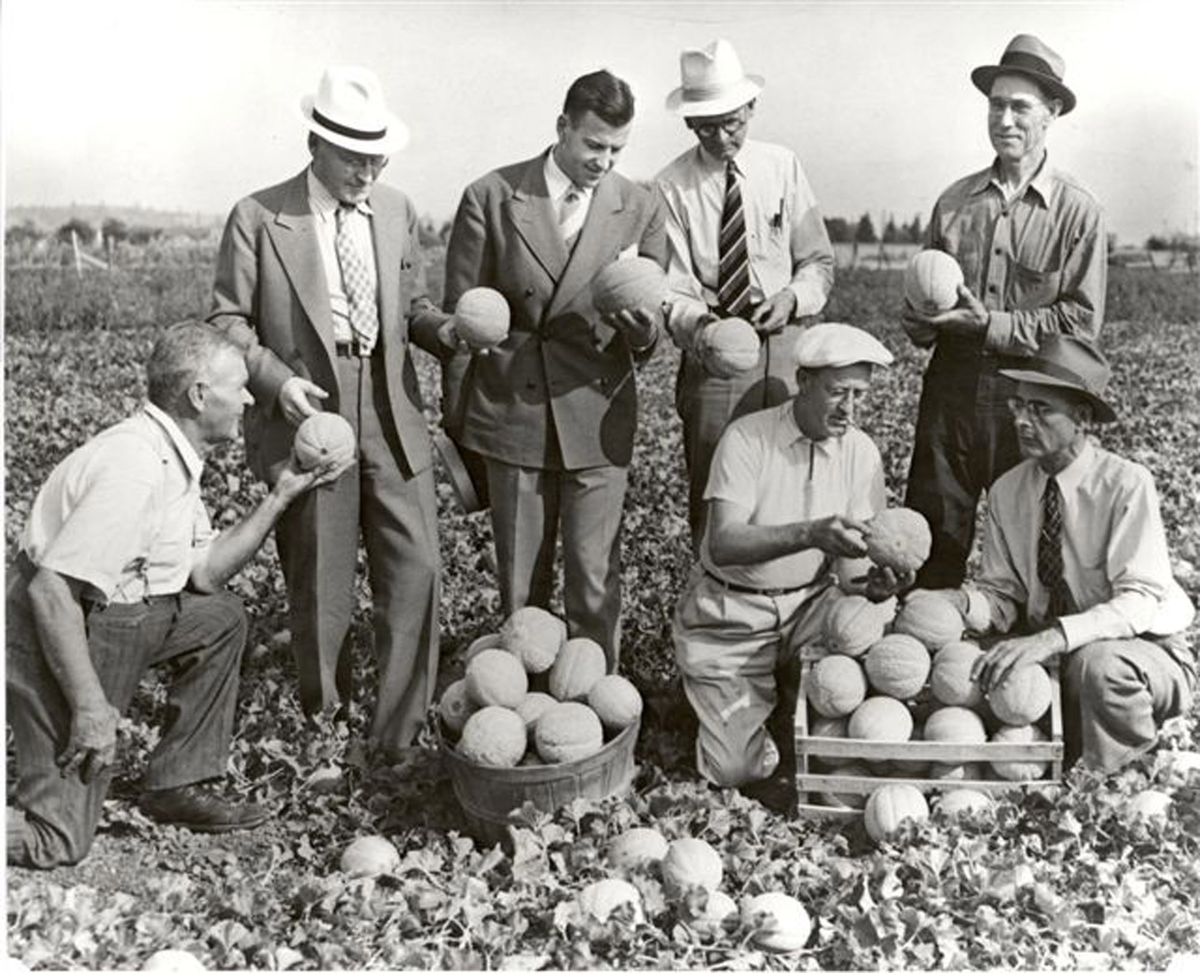‘Water is the Story’
Museum exhibit celebrates area’s farming legacy

Irrigation gave life to Spokane Valley, and now the Spokane Valley Heritage Museum is giving new life to the area’s farming history with a special exhibit on irrigation.
Bringing water to produce fields and apple orchards scattered throughout the Valley made development and expansion possible in the early 20th century.
A nearly life-size mural of several Valley residents posing in an irrigated field graces a museum wall. Above their heads is another mural of a watermelon field in Otis Orchards with a large wooden water transport system, called box flumes, held above the field on wooden legs. The gravity-fed system carried water throughout the Valley around the turn of the century. “I’ve always wanted to have some sort of representation of the box flumes because they were everywhere,” said museum director Jayne Singleton.
There’s also a modern reconstruction of the box flumes that carried water for miles, though it is shallower and narrower than the original system. The original edifices were4 feet deep and 3 to 4 feet wide and lined with tin. “This is a prop,” she said. “This isn’t authentic. I wish it was.”
The effort to irrigate the Valley began in 1899. By 1907 the system was complete, with 54 miles of irrigation ditches. Some were simply dug out of the earth while others were lined with concrete. In addition to giving life to crops, the ditches also served as a giant water slide for local children. “You weren’t supposed to,” said Singleton, who noted that ditch watchers were employed somewhat unsuccessfully to keep kids out. “Swimming in the ditches was a rite of passage.”
The irrigation system has its roots in the Corbin Irrigation Head Gate that Frederick Post built on the Spokane River. The museum has a large piece of wood from the gate, which was restored several years ago, as well as pictures of the landmark before and after the restoration. The museum also managed to obtain a wooden water pipe and a cast iron pump. There are also several historical photos of the irrigation system. “Pieces and parts are coming together,” she said.
The irrigation exhibit, called “Water is the Story” is now open at the museum.